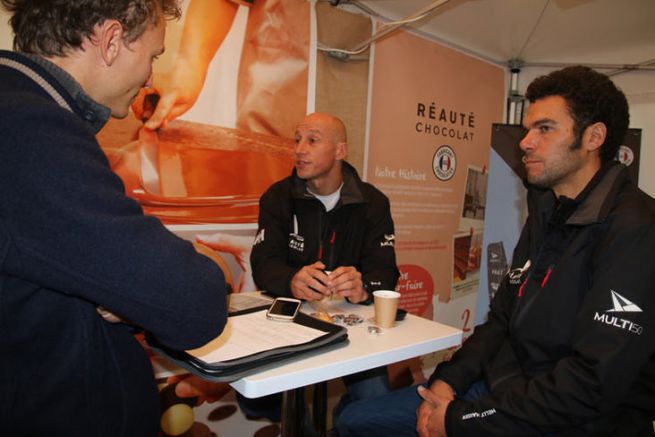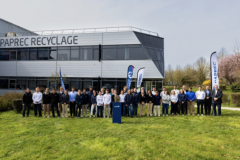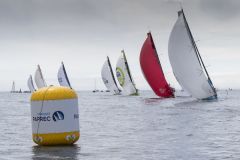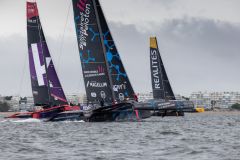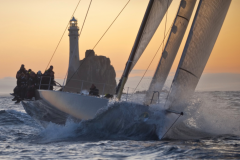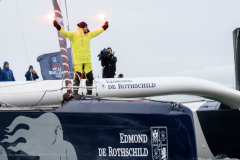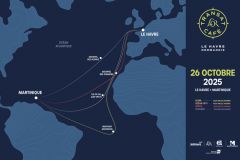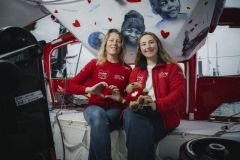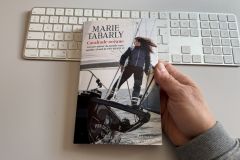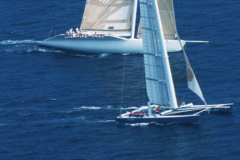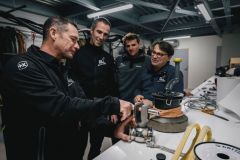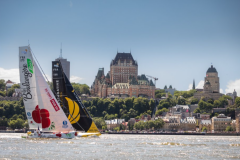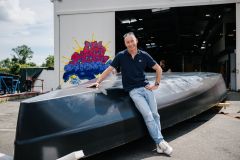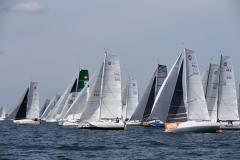Why did you want to get into the Multi 50 class?
ARMEL: I started in 2015. I used to race in the 40' Class. The Class 40' is a very nice boat, but I see it more as a bridge to other supports. It's been a gateway to the IMOCA and also a gateway to the Multi 50. It was while preparing for the English transatlantic race that I was contacted by Réauté Chocolat. That's how the meeting came about following an article in the newspaper.
I'd sailed in the Canary Islands Grand Prix with Erwan Leroux, who invited me in 2015 and introduced me to the Multi 50. It made me want to. So I set up a programme to find sponsors. We soon came to an agreement with Réauté Chocolat on the support, even though I strongly influenced them. When we went round the series, we were just before the Vendée Globe, so there was no boat left. It wasn't a year to get into the IMOCA class. In the Figaro, they didn't want to and neither did I, in the Class 40' they didn't want to, so there was still the Multi 50 or the Ultim, but the Ultim was off budget.
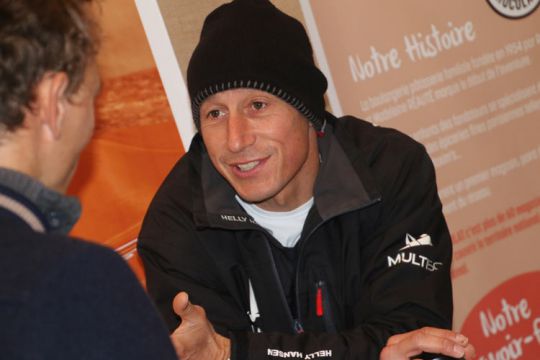
What brought you and Vincent together on this boat for this race?
VINCENT: I'm a sailor, but my livelihood is being a boat preparer. I had worked for two years on this boat with the former owner, Yves le Blevec. As I knew the boat, Armel offered me the chance to come on board. I was available at the time so it was the right timing and the right meeting. For me, it's a great opportunity, as it's quite rare for a skipper to take on board his préparateur or boat captain. Usually skippers are looking for another star, even if the person doesn't know the boat well. That's the calculation Armel made: I know the boat 100% and I'm available.
ARMEL: When I set up the project, I made an overview of the people likely to accompany me. 9 out of 10 people said "Vincent Barnaud" to me. Since the launch, we've been doing all the sailing together.
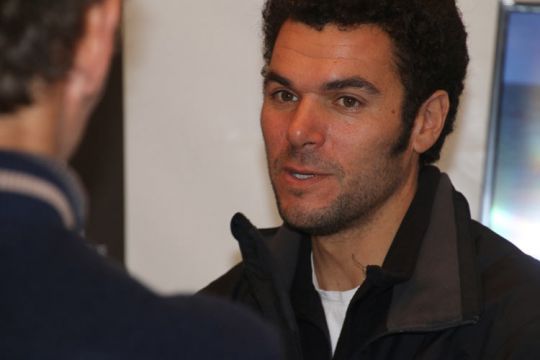
You chose to add foils to this boat, how did this idea come about?
ARMEL: From the outset, we knew that the class was opening up to that, so we argued to the partner that if we didn't put a foil on, we'd be running behind. It's 250keuros more, so the question was whether to install them in the first year or wait and see. The partners were also in a logic of sporting results, the idea is to be as competitive as possible. The idea is to be as competitive as possible. They adhere well to this approach, so it came about quite naturally.

What performance gain does the foil bring?
ARMEL: We've never sailed without a foil. However, we sailed for a month and a half with only one foil. Because we wanted to have a fair system within the class, everyone got the port foil and then got the starboard foil at the same time. So we were able to sail without foils and with foils. It's not the same boat behaviour at all.
I had sailed with this type of foil on the old IDEC or the old Sodebo, but the effect was not preponderant. The foils really lightened the weight and played a real role in providing lift.
You can transpose a lot of the knowledge you had on other media, but multihulling is still a separate exercise, so I had a lot to learn. I'd been on the F18, but I hadn't had much experience of offshore multihull sailing. I relearned everything. It's a good challenge.
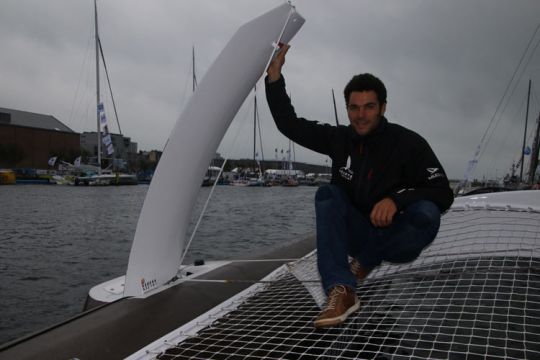
What is the objective of your race in the Transat Jaques Vabre?
ARMEL: It's already finishing the race. Vincent and I are determined to have a good race, but we have to stay measured and finish with a boat in good condition. We're not going to take excessive risks and take difficult options that could put the boat's structure at risk. We know we're not the most experienced crew/boat combination. There are other favourites, but we know our weapons, we've trained well and we know our boat and her strong points perfectly... We're confident, even if in an ocean race anything can happen, so it's impossible to make predictions.
VINCENT: The goal after that is the Route du Rhum. Even if the Jacques Vabre is a great race, it helps to prepare for the Route du Rhum.
Adding foils to the boat involves major structural and architectural modifications?
VINCENT: Yeah, huge. These are very important changes. The floats and the hulls of the Multi 50s, for a matter of cost, are made of fibreglass, not carbon fibre. So as the foils are put on the floats, it was necessary to reinforce them, as all the boat's load is now located at one point, on the foil. This area has been reinforced all in carbon. It took 4 months of work. Bulkheads were added to hold the foils wells and the arms were reinforced, as they are going to be twisted differently.
As there is no access hatch, we had to open the float in front and behind, go inside and close everything. The arms were reinforced with a monolithic UD of pure carbon up to the inside of the float. We had to make scarps with the UDs. The JPS shipyard in La Trinité sur Mer built the boat and made the modifications.
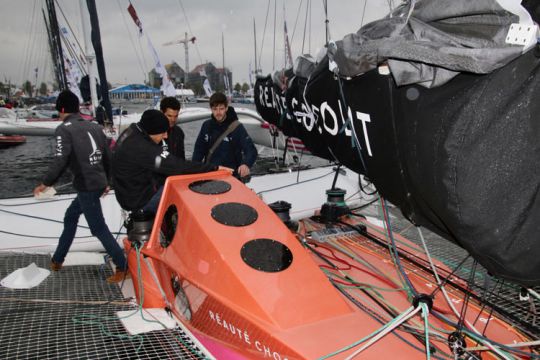
How do you adjust the foil?
VINCENT: We all have the same foil and the same adjustment system. The foil well and the foil wedges are one design. You can play on the rake by moving the high wedge forward or backward. The low wedge is fixed. It influences the incidence and therefore the lift.
The up and down end of the foil returns to the cockpit. The brown tip behind it is the rake. It goes back to the lee pod. We are not always adjusting the rake all the time, as we already had the headsail spreader that was downwind, we also installed the rake adjustment to free up space for the piano.
The incidence is adjusted at take-off, as it is best not to do so under load. We can do it, but it's better to do it first. If you want to remove the rake or set the incidence it's quite easy, because you just have to pull hard with the winch, but afterwards to remove it you have to stop, because the only way to move the high wedge forward is to pull on the rising end of the foil. So it only works half right. Even if there is a force component towards the front, it is mainly made to pull upwards. We have to unload the boat to be able to adjust.
The boat doesn't fly, but it's enormously buoyant.
The foil can support 19 tons and the boat is 4.2 tons, 4.5 tons at the start of the transat. So in terms of dynamics, they decided to make a very strong foil capable of supporting 4 times the weight of the boat in static. But as the foil has to break before the structure, it was necessary to make a very strong structure.

